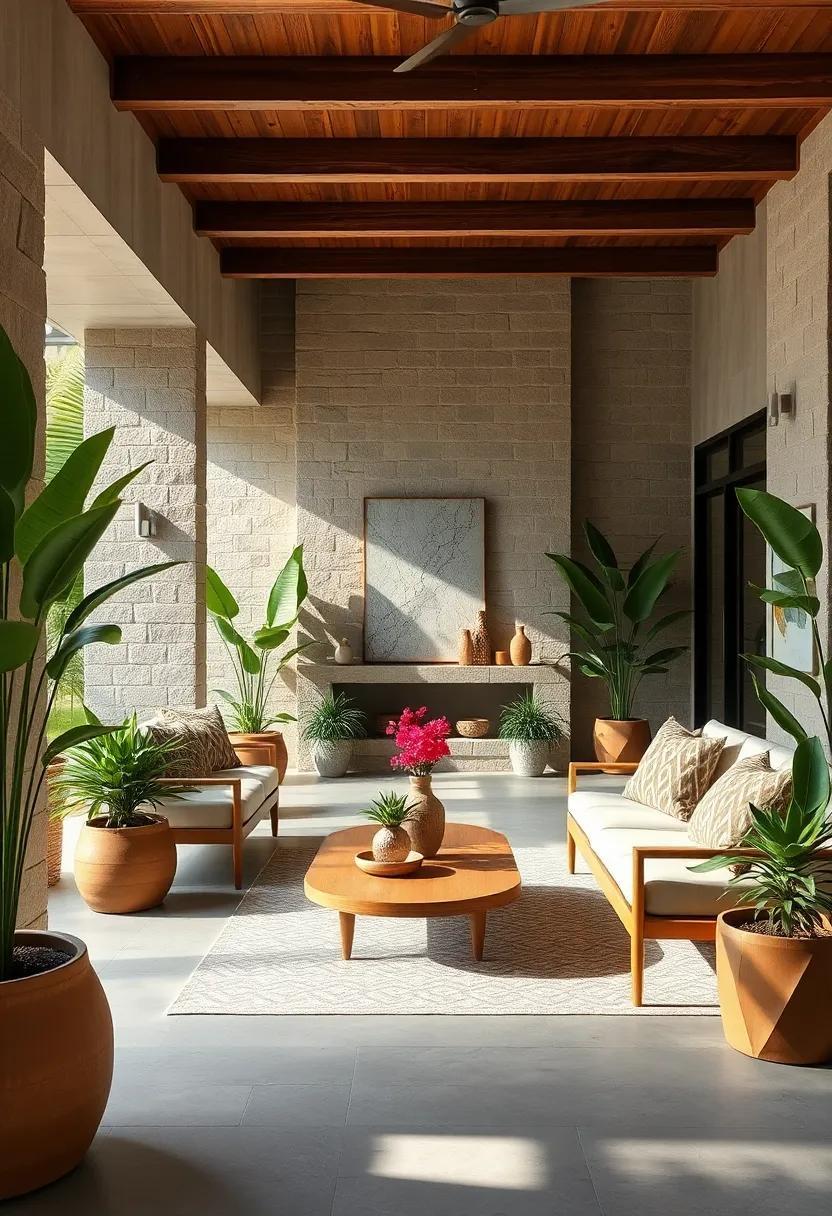In a world increasingly aware of the delicate balance between nature and urban development, the quest for sustainable outdoor spaces has never been more relevant.As we step into our gardens, parks, and public landscapes, we are presented with a unique prospect to harmonize our built environments with the natural world. At the heart of this transformation lies the often-overlooked beauty of native plants.Embracing these local flora not only fosters biodiversity and resilience in our ecosystems but also invites a tapestry of colors, textures, and life into our surroundings. This article delves into the principles and practices of creating outdoor spaces that celebrate native plants, exploring how they can enhance our connection to nature while promoting sustainability. Join us as we uncover the numerous benefits of cultivating landscapes that resonate with the spirit of their region, proving that beauty and sustainability can flourish hand in hand.
Exploring the Allure of Native Plants in Eco-Friendly Landscapes

Incorporating native plants into eco-friendly landscapes not only enhances the beauty of your outdoor spaces but also promotes ecological balance. These resilient flora are adapted to the local climate, soil conditions, and wildlife, making them a sustainable choice for gardeners and landscapers alike. Benefits of native plants include:
- Low Maintenance: Require less water and fertilizers compared to non-native species.
- Biodiversity: Attract local pollinators,such as bees and butterflies,supporting ecosystem health.
- soil Health: Help prevent erosion and improve soil structure, enhancing the environment.
Moreover,native plants can thrive in various landscape designs,from charming cottage gardens to minimalist modern spaces. Their natural adaptations enable them to flourish with minimal intervention, fostering a self-sustaining environment. When planning your landscape, consider a mix of indigenous species to create a vibrant and inviting atmosphere. Here’s a simple breakdown comparing popular native plants:
| Plant Name | Bloom Season | Wildlife Value |
|---|---|---|
| Black-eyed Susan | Summer | Attracts butterflies |
| Purple Coneflower | Summer to Fall | Supports bees and birds |
| Louisiana Iris | Spring | Attracts hummingbirds |
The Role of Native Flora in Biodiversity and Ecosystem Health
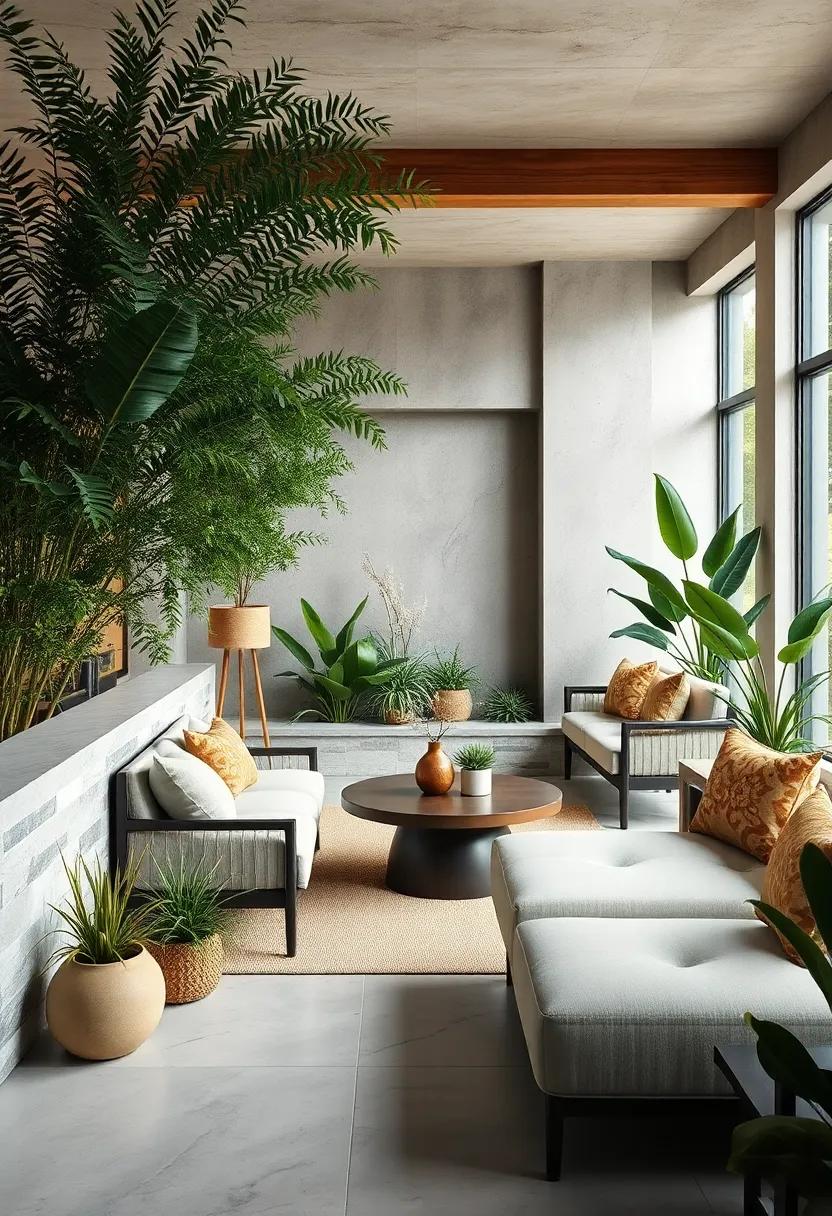
The richness of native flora plays a pivotal role in sustaining biodiversity and ensuring the overall health of ecosystems. By cultivating native plants, we invite a myriad of wildlife species into our outdoor spaces, creating a vibrant tapestry of life. These plants are uniquely adapted to local climate conditions and soil types, making them resilient and low-maintenance choices for gardeners.Some of the benefits include:
- Attracting Pollinators: native flowers and shrubs serve as essential food sources for bees, butterflies, and othre pollinators, promoting their populations.
- Supporting Wildlife: Birds, insects, and small mammals rely on native plants for shelter and sustenance, fostering healthy ecosystems.
- Soil Health: Native root systems can improve soil structure and health, preventing erosion and promoting water retention.
Moreover, the use of native species aids in the restoration of ecological balance disrupted by invasive plants. These non-native species frequently enough outcompete local flora, leading to diminished plant diversity and altered habitats. By prioritizing native plants in landscaping, we create resilient ecosystems that can withstand climate changes and support a variety of life forms. In addition, consider the following comparative benefits of native vs.non-native plants:
| Aspect | Native Plants | Non-Native Plants |
|---|---|---|
| Maintenance | Low | High |
| Wildlife Support | High | Variable |
| Invasiveness | Low | High |
Creating Harmony with Nature: The Importance of Local Plant Species
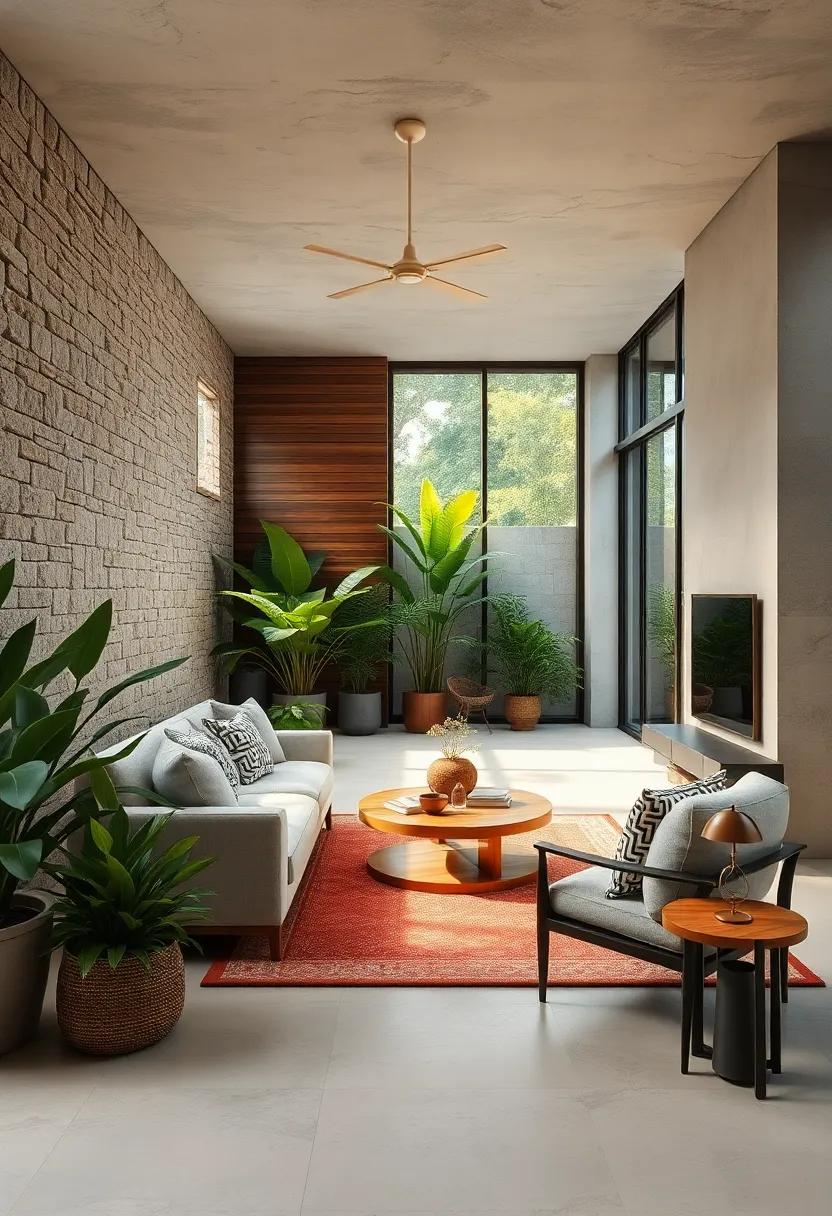
In designing sustainable outdoor spaces, embracing local plant species is not just an aesthetic choice; it’s a vital step toward fostering a balanced ecosystem. Native plants are specifically adapted to their local environment, which means they require less water and maintenance compared to non-native varieties. This adaptability not only conserves resources but also supports local wildlife. By choosing local flora, you attract specific pollinators, such as bees and butterflies, creating a thriving habitat that enhances biodiversity. The interconnectedness of local ecosystems benefits everyone—even urban settings can feel rejuvenated by the inclusion of native greenery.
Moreover, integrating local plant species into your landscape can lead to a reduction in invasive species, which frequently enough threaten the sustainability of ecosystems. By prioritizing native varieties, you contribute to the preservation of your region’s unique botanical heritage. Consider a selection of plants that thrive in your specific climate and soil conditions. As an example, the table below showcases some delightful native options you can plant:
| Plant Name | Benefits | Bloom Season |
|---|---|---|
| Echinacea purpurea | Attracts butterflies, drought-resistant | Summer |
| Rudbeckia hirta | Pollinator-friendly, low maintenance | Summer |
| Asclepias tuberosa | Supports Monarch butterflies, vibrant color | summer to Fall |
Transforming Outdoor Spaces with the Beauty of Wildflowers

wildflowers offer a stunning array of colors,shapes,and scents that can transform any outdoor space into a vibrant ecosystem. When you choose to incorporate these native plants, you not only enhance the visual appeal of your garden but also promote biodiversity and sustainability. Native wildflowers are frequently enough well-adapted to local soil and climate conditions, requiring minimal maintenance and less water than conventional garden varieties. By prioritizing these species, you can create a resilient landscape that thrives without excessive chemical inputs.
Furthermore, the presence of wildflowers supports local wildlife, including essential pollinators like bees and butterflies. To maximize the impact of your floral display, consider planting:
- Echinacea – a favorite among pollinators, known for its striking purple blooms.
- Coreopsis – offering a cheerful burst of yellow that attracts various beneficial insects.
- Asclepias – vital for monarch butterflies, providing both nectar and habitat.
when planning your outdoor space, aim for a mix of these native varieties to create a dynamic environment that changes with the seasons. Not only does this approach yield aesthetic and ecological benefits, but it also fosters a deeper connection between your home and the natural world.
Selecting the Right Native Plants for Aesthetic and ecological Balance

When it comes to creating a visually stunning and environmentally friendly outdoor space, selection is key. Native plants are not only adapted to the local climate but also play a crucial role in supporting local wildlife and maintaining ecological balance. Consider the following factors when choosing the right native plants for your landscape:
- Climate Suitability: Ensure the plants thrive in your local climate conditions, including rainfall, temperature, and soil type.
- Sun Exposure: Identify the sunlight conditions of your garden—full sun, partial shade, or full shade—and select plants accordingly.
- Wildlife Attraction: Choose species that support local biodiversity by providing food and habitat for birds, bees, and butterflies.
- Seasonal Interest: Incorporate a variety of plants that bloom at different times to ensure year-round beauty and dynamic color palettes.
To make the selection process simpler, consider creating a plant palette table that includes native options suited to various garden aesthetics.The table below showcases a few exemplary native plants that balance beauty with ecological benefits, ensuring your garden is both attractive and sustainable:
| Plant Name | Season of Interest | Wildlife Benefits |
|---|---|---|
| Eastern red Columbine | Spring | Attracts hummingbirds |
| black-eyed Susan | Summer | Supports butterflies |
| New England Aster | Fall | Food source for bees |
| Purple Coneflower | Summer to Fall | Bees and butterflies |
Crafting Inviting Outdoor Spaces: Blending Form and Function
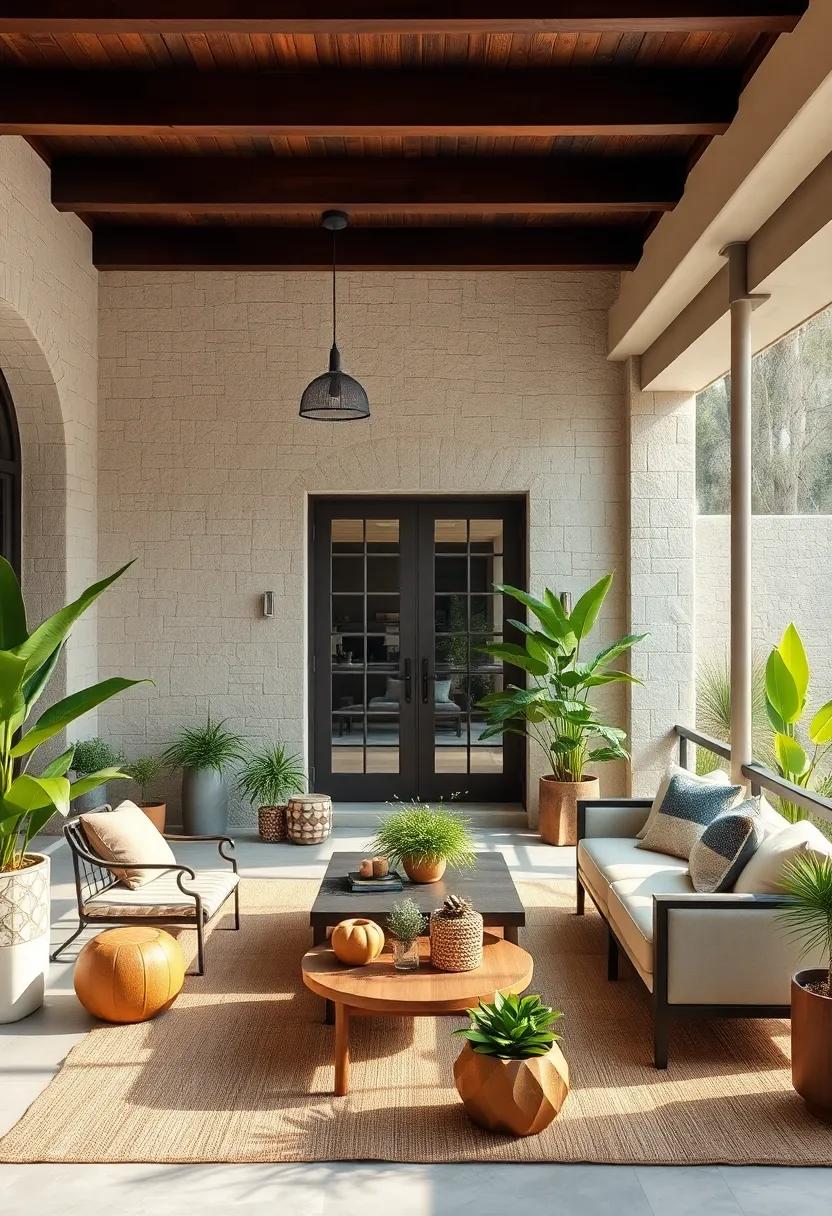
Creating outdoor environments that are both aesthetically pleasing and functional requires a delicate balance. One effective way to achieve this is by integrating native plants, which not only enhance the visual appeal of a space but also contribute to its ecological health. These plants are well-adapted to their local climates and soils, requiring less water and maintenance compared to exotic varieties. When designing your outdoor area, consider incorporating the following elements:
- Seasonal Color: Choose a mix of flowering plants that bloom at different times to ensure year-round interest.
- Textural Diversity: Combine a variety of plants with different leaf shapes and sizes to create visual layers.
- Wildlife Habitat: Plant species that attract bees, butterflies, and birds to enrich biodiversity.
To further enhance the functionality of your outdoor space, consider incorporating well-planned pathways and seating areas. these features invite relaxation and interaction while defining the landscape’s flow. A simple table can help illustrate the benefits of incorporating these elements:
| Element | Functionality | Aesthetic Benefit |
|---|---|---|
| Pathways | Guide foot traffic, enhance accessibility | Add structure, encourage exploration |
| Seating Areas | Encourage social interaction, relaxation | Provide focal points, invite enjoyment of nature |
Native Plant Benefits: Attracting Pollinators to Your Garden Sanctuary
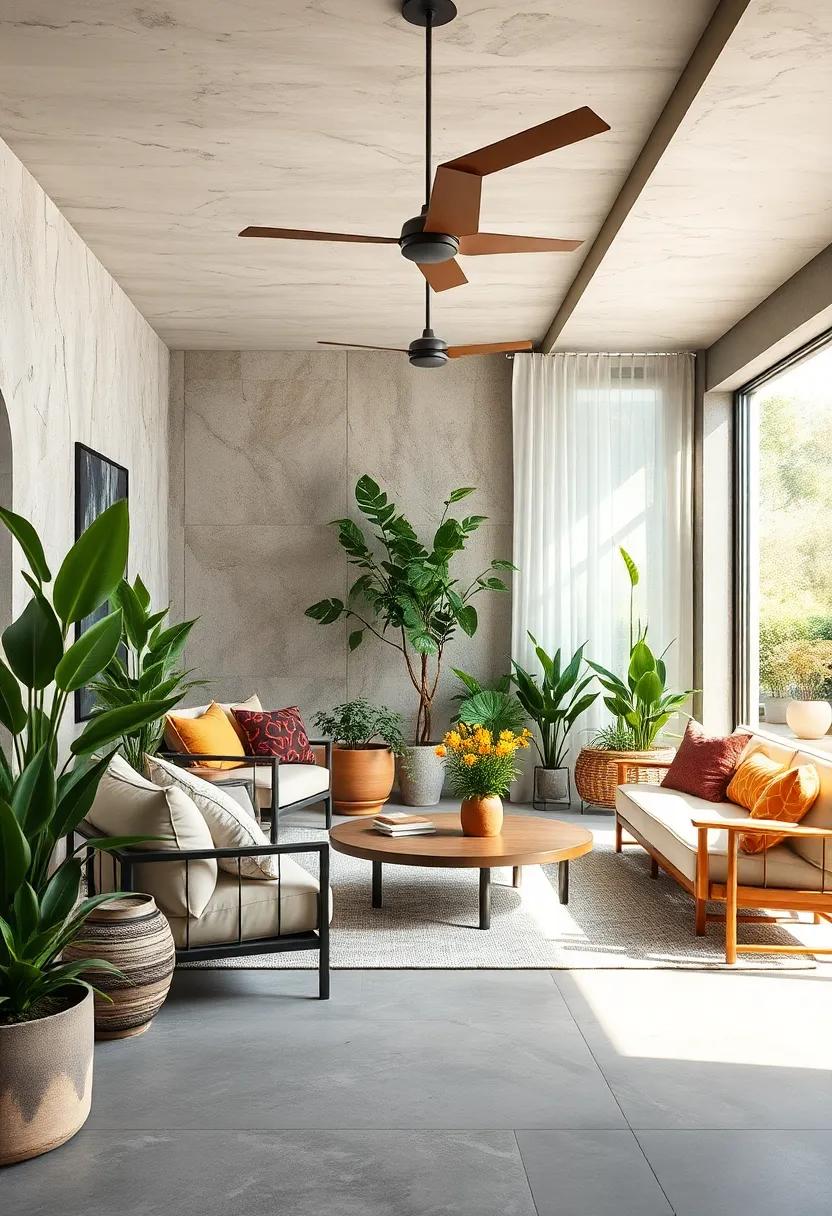
The harmonious relationship between native plants and local pollinators is a cornerstone of a thriving garden sanctuary. By incorporating native species into your outdoor space, you’re not only beautifying your environment but also providing essential habitats for a plethora of pollinators, including bees, butterflies, and hummingbirds.These insects and birds are vital for the reproduction of many plants, meaning that when they flourish, so does the entire ecosystem.Planting a diverse range of native flora can lead to a rich variety of colors and scents that will entice these beneficial creatures to visit your garden, ultimately supporting their life cycles and ensuring the health of the surrounding environment.
To maximize the appeal of your garden for these pollinators, consider choosing plants that bloom at different times throughout the growing season. This thoughtful approach helps provide a continuous food source and habitat throughout the year. Additionally, opting for plants that are resistant to local pests and require less water can contribute to a more sustainable landscape. Here’s a swift overview of some key native plants that attract pollinators:
| Native Plant | Attracts |
|---|---|
| Echinacea (Coneflower) | Bees,butterflies |
| Rudbeckia (Black-eyed Susan) | Bees,hummingbirds |
| Asclepias (Milkweed) | Monarch butterflies |
| Lavandula (Lavender) | Bees,butterflies |
Seasonal Color: celebrating the Bloom Cycle of Native Flora
As each season unfolds,native plants showcase their vibrant palette,enlivening our outdoor spaces. This remarkable bloom cycle embodies the intricate relationship between flora and the environment, reflecting the resilience and adaptability of species that have thrived in their natural habitats for centuries.From the delicate blossoms of spring wildflowers to the fiery hues of autumn leaves, these plants not only beautify our landscapes but also offer essential habitats and food sources for local wildlife. Some key seasonal highlights include:
- Spring: Bluebells and wild violets carpeting the ground.
- Summer: luminous orange California poppies dancing in the breeze.
- Fall: Goldenrods and asters creating a warm, inviting atmosphere.
- Winter: Evergreen shrubs and trees providing structure and interest.
Integrating these native species into our gardens is not merely an aesthetic choice; it fosters biodiversity and promotes sustainable ecosystems. understanding the blooming cycles of these local plants enables us to select varieties that thrive in our specific regions, reducing the need for synthetic fertilizers and excessive water. Below is a quick reference table that highlights some native plants along with their bloom times and ideal conditions:
| Plant Name | Bloom Time | Sun Exposure |
|---|---|---|
| Bee Balm | Summer | Full sun to partial shade |
| Black-eyed Susan | Summer to Fall | full sun |
| Common Bluebell | Spring | partial shade |
| New England Aster | Fall | full sun to partial shade |
Designing with textures: The Visual Impact of Diverse Plant Forms

Incorporating varied textures into outdoor spaces not only enhances aesthetic appeal but also introduces depth and interest to garden designs. Native plants, with their unique forms and sizes, provide a stunning visual contrast.Think about mixing tall grasses that sway gently in the breeze with low-growing succulents that add a different tactile experience. Layering plants with varying leaf shapes, such as the serrated edges of native ferns alongside the smooth, oval leaves of wildflowers, creates a dynamic composition that invites both the eye and touch. This diversity not only captures attention but can also offer habitats for local wildlife, fostering a sense of ecology in your outdoor space.
To further highlight the beauty of this approach, consider employing a thoughtful selection of plant forms in distinct zones. By curating your plant choices based on their characteristics, you can create a harmonious environment that celebrates nature. Here’s a quick guide to inspire your plant selections:
| Texture | Example Plant | Visual Impact |
|---|---|---|
| Fine | Blue Fescue | Delicate and airy feel |
| Coarse | Bearberry | Bold and structured presence |
| Textured | American Elderberry | Rich detail and interest |
by carefully selecting plants that exhibit contrasting textures, colors, and forms, you can create a symphony of visual delights in your garden. This intentionality in design not only pleases the eye but also aligns with sustainable practices, as native plants require less maintenance and support local biodiversity. Embrace the myriad possibilities that these natural textures provide — they will transform your outdoor spaces into vibrant, living masterpieces.
functional Aesthetics: Structuring Spaces with Native Grasses

Incorporating native grasses into outdoor spaces not only enhances visual appeal but also promotes ecosystem health. These resilient plants thrive in their local environment, requiring minimal maintenance while providing a myriad of benefits. By opting for native grasses, you facilitate water conservation, as they are adapted to the region’s climate and soil conditions. Furthermore,their fibrous root systems help prevent soil erosion,improve soil structure,and enhance water infiltration,creating a functional yet lovely landscape.
To create an inviting atmosphere, consider designing spaces that utilize native grasses in a variety of heights and textures, allowing for dynamic compositions. Grouping plants in naturalistic drifts can mimic their wild habitats,fostering a sense of harmony. Here are some options for using native grasses effectively:
- Border Edges: Plant taller grasses along the perimeter for a gentle wave effect.
- Focal Points: Use clumps of bold grasses as eye-catching features within the design.
- Transitions: Blend grasses with flowering plants to create seamless movement throughout the space.
Water Efficiency: Leveraging Drought-Resistant Native Plants
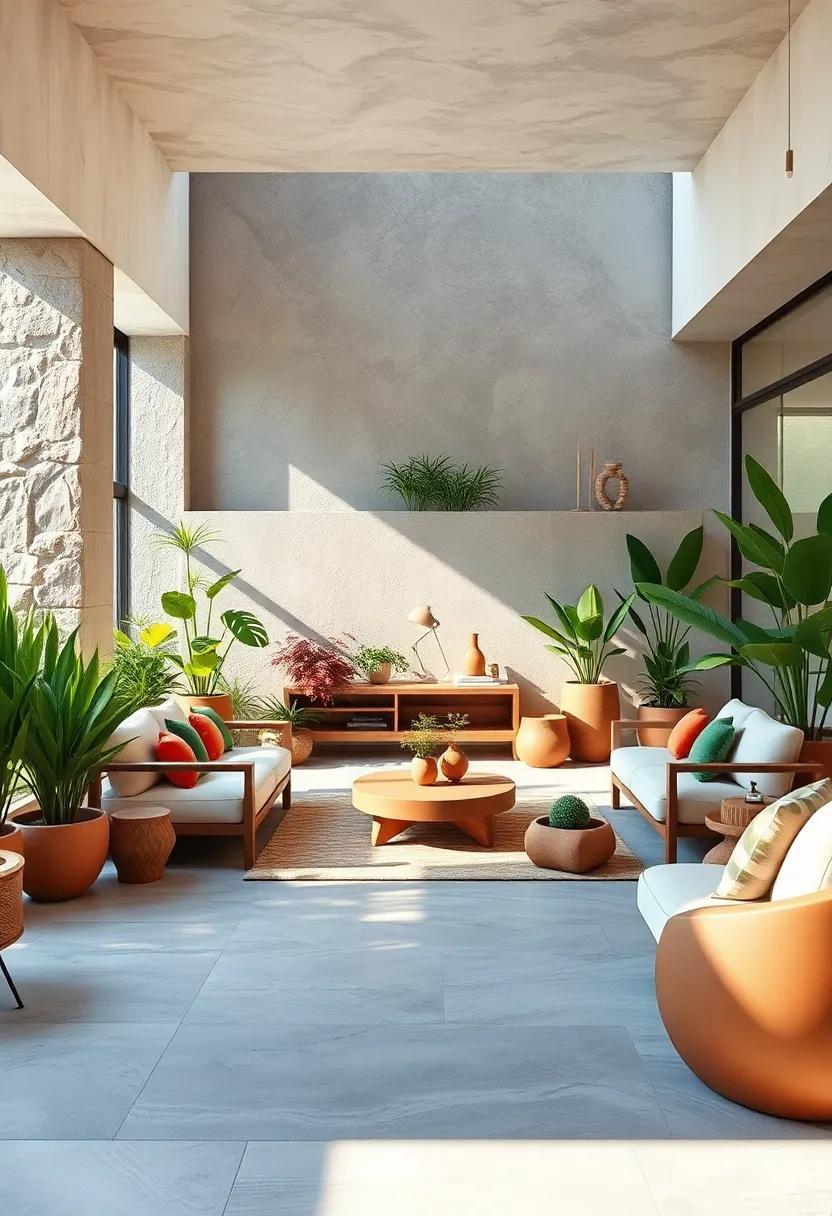
Utilizing drought-resistant native plants is a vital stepping stone toward achieving a water-efficient landscape that harmonizes with the local ecosystem. These plants are not only adapted to your regional climate, but they also offer a myriad of benefits that contribute to sustainability. By incorporating species that thrive in existing conditions, you can:
- Reduce Water Consumption: Native plants require less irrigation once established, conserving precious water resources.
- Minimize Maintenance: Their natural resilience leads to lower upkeep, freeing you from excessive mowing, pruning, or pest control.
- Support Local Wildlife: Many native plants provide essential habitats and food sources for pollinators, birds, and beneficial insects.
To effectively implement a water-efficient strategy, it’s helpful to plan your landscape with a thoughtful selection of native species. Consider a mix of perennials, shrubs, and groundcovers to create a visually appealing tapestry while maximizing water savings. Here’s a simplified overview of some drought-tolerant native plants to inspire your choices:
| Plant Name | Key Features |
|---|---|
| California poppy | Vibrant blooms, attracts pollinators, low water needs |
| Black-eyed Susan | Bright yellow flowers, drought-tolerant, resilient |
| Desert Marigold | Long blooming season, thrives in dry conditions |
| Blue Sage | Attractive to bees, minimal water usage, aromatic foliage |
Nurturing wildlife: Building Habitats with Native Vegetation
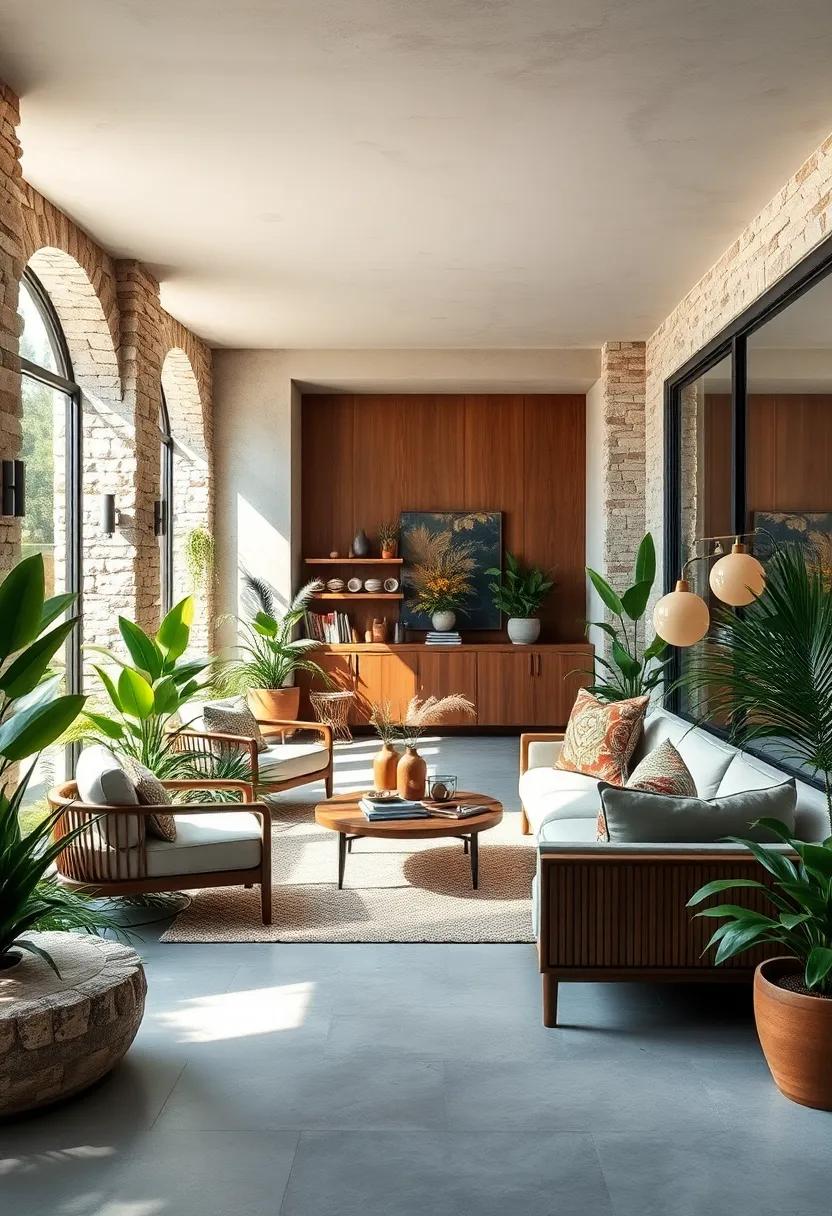
Creating habitats for wildlife begins with understanding the importance of native vegetation in our ecosystems. Incorporating plants that are indigenous to your area not only supports local species but also fosters biodiversity in your outdoor spaces. when selecting native plants, consider the following benefits:
- Adaptability: native plants are naturally suited to the local climate and soil conditions, ensuring easier maintenance.
- Wildlife Support: These plants provide essential food and shelter for local wildlife, including birds, insects, and small mammals.
- Pest Resistance: They are more resistant to pests and diseases, reducing the need for chemical interventions.
To effectively nurture wildlife, design your garden with various layers of vegetation, which can create a more welcoming environment for different species. Consider implementing a mix of trees, shrubs, and ground cover, utilizing the following elements in your habitat design:
| Layer | Plant Examples |
|---|---|
| Canopy | Oak, Maple, Pine |
| understory | Dogwood, Redbud, Serviceberry |
| Ground Cover | Wildflowers, Ferns, Grasses |
The Ecological Impact of Replacing Invasive Species with Natives
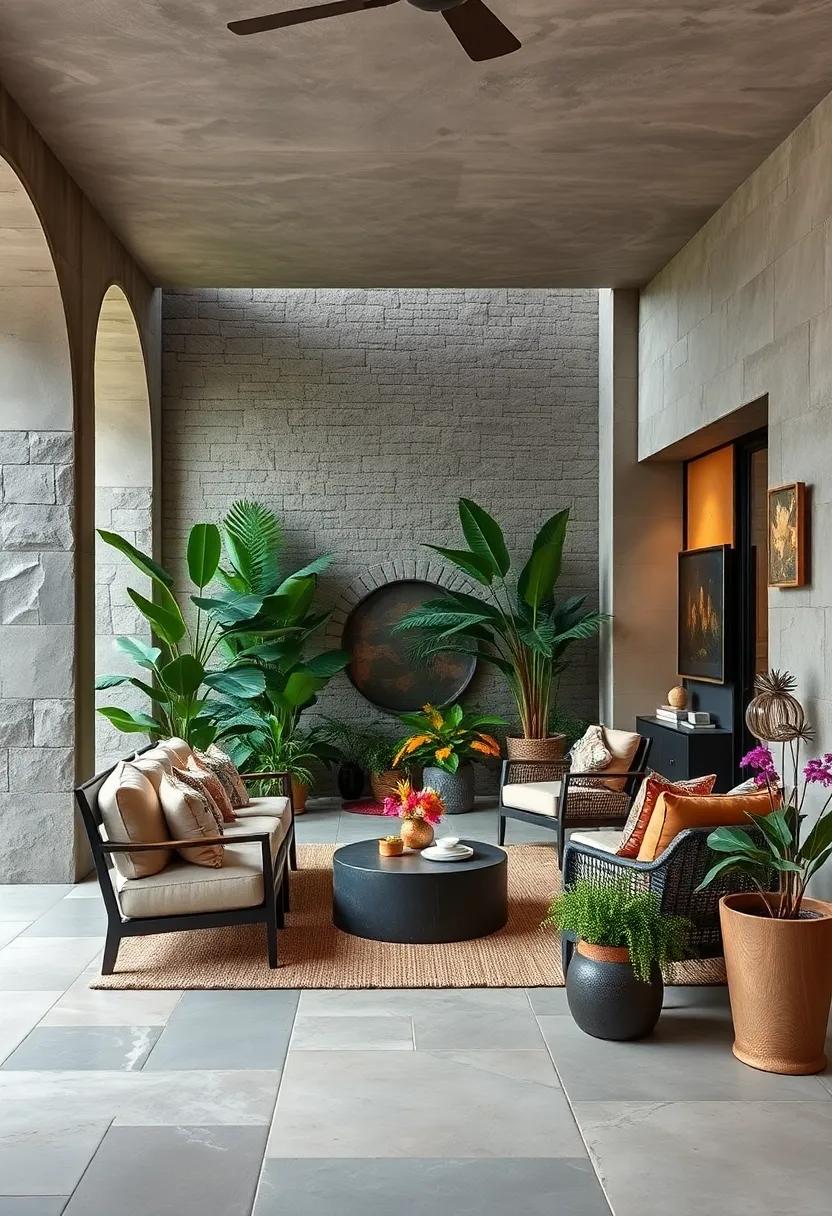
Replacing invasive species with native plants has a profound ecological impact that extends far beyond the immediate landscape. Native plants thrive in their local environments, offering critical support to indigenous wildlife by providing food and habitat that invasive species often fail to deliver. These native counterparts have co-evolved with local fauna, fostering intricate relationships; for example, many pollinators, such as bees and butterflies, rely on specific native flowers for nourishment. Furthermore, as native plants are adapted to local climates and soils, they require fewer resources, such as water and fertilizers, thus promoting healthier ecosystems and reducing the need for chemical interventions.
In addition to enhancing biodiversity, the removal of invasive species and their replacement with natives boosts soil health and water conservation.Native plants have deeper root systems that stabilize soil and prevent erosion,while their natural growth patterns help regulate water cycles.This creates a more resilient landscape capable of withstanding environmental stresses, such as droughts and floods. The table below highlights some key benefits of native plants compared to invasive species:
| Aspect | Native plants | Invasive Species |
|---|---|---|
| Wildlife Support | high diversity, supports local fauna | Poor support, often disrupts local fauna |
| Resource Needs | Low water and fertilizer needs | High resource consumption, promotes dependency |
| Soil Health | Improves soil structure and fertility | Can degrade soil quality over time |
Creating Natural Pathways: The Journey through Native Plant gardens
Exploring native plant gardens is akin to walking through a vibrant tapestry of life, where every thread contributes to the overall design of our ecosystems. Each pathway leads to a unique display of local flora, inviting not only the eye but also a multitude of pollinators. A thoughtfully crafted landscape features a variety of native species that thrive in harmony, drawing attention to their rich colors and textures. Consider incorporating plants like purple coneflower,milkweed,and black-eyed Susan,which not only provide beauty but also bolster local biodiversity by offering habitat and food sources for wildlife.
The design of these gardens can also reflect the natural topography and soil conditions of your region, allowing for easy maintenance and enhanced growth. By utilizing principles of permaculture, pathways can be shaped to invite exploration without disrupting the delicate balance of existing habitats. Create inviting spaces by adding features such as benches or natural seating areas crafted from logs or stones, encouraging visitors to pause and appreciate the thriving ecosystems around them. Engaging in the cultivation of such landscapes fosters a deeper connection to the environment while promoting sustainability and resilience in our outdoor spaces.
Invoking Serenity: outdoor Spaces Designed for Relaxation and Reflection

Creating tranquil outdoor spaces involves thoughtfully integrating the natural beauty of native plants, allowing for a seamless blend of relaxation and reflection. These gardens serve as refuge, offering a soothing backdrop for contemplation and stress relief. To facilitate this serene environment,consider the following design elements:
- native Flora: Select plants that are indigenous to your region to promote biodiversity.
- Natural Water Features: incorporate ponds or fountains which can offer a calming auditory experience.
- Shaded Nooks: Design cozy corners with benches or hammocks beneath canopies of native trees.
- Wildlife Habitats: A diverse planting scheme attracts pollinators and birds, enriching the sensory experience.
Transform your outdoor retreat into a haven of peace by utilizing sustainable materials and practices. Simple structures such as natural stone paths can guide visitors through the landscape, while organic mulch around plants can enhance moisture retention and reduce weeds. Additionally,establishing a community garden table can foster connections and encourage local participation in maintaining these serene ecosystems. Here’s a quick overview of some effective native plants you might consider:
| Plant Type | Benefits |
|---|---|
| Lavender | Invites pollinators and provides soothing scents. |
| Black-eyed susan | Brightens spaces and attracts butterflies. |
| Salvia | Easy to grow and attracts hummingbirds. |
Culinary Delights: Incorporating Edible Native Plants into Your Landscape
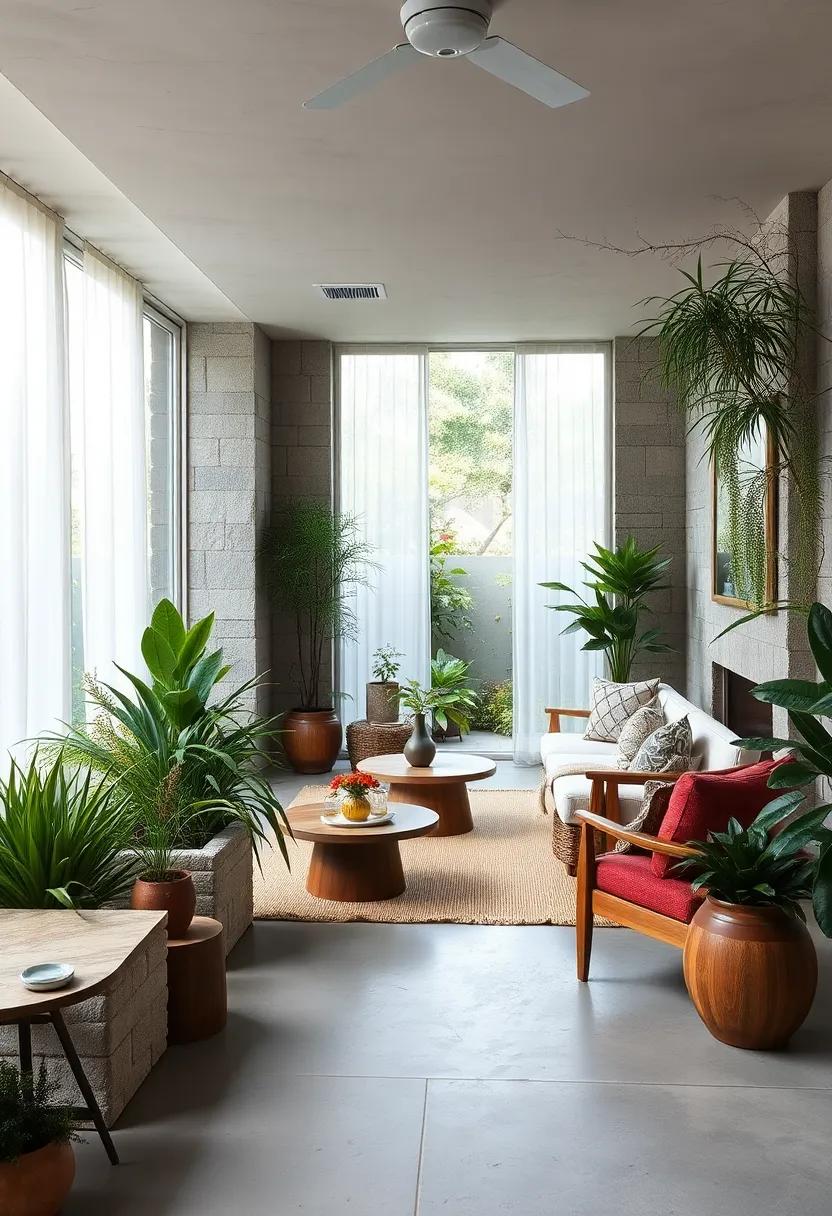
Transform your outdoor space into a culinary paradise by integrating a medley of edible native plants. Not only do these plants contribute to biodiversity and local ecosystems, but they also provide flavorful ingredients for your kitchen. Consider incorporating the following options into your landscape design:
- Wild Blueberries: These nutrient-packed berries thrive in acidic soils and are a treat for birdlife and humans alike.
- Pawpaw Trees: Known for their custard-like fruit, pawpaw trees can add a tropical flair to your garden.
- American Persimmon: This hardy tree produces sweet, flavorful fruit in the fall, perfect for fresh eating or preserves.
- Milkweed: While primarily known for attracting pollinators, its young shoots and flower buds are also edible when cooked.
To optimize the growth and health of your edible native plants, consider planting them in a variety of ecological niches that replicate their natural habitats. Organizing plants by their light and moisture requirements can create a vibrant, sustainable garden. Use the table below to compare some ideal pairings that can thrive together:
| Plant Type | Light Requirement | Water Needs |
|---|---|---|
| Wild blueberry | Partial Shade | Moderate |
| Pawpaw Tree | Full Shade | High |
| milkweed | Full Sun | Low |
| American Persimmon | Full Sun | Moderate |
Celebrating Local Heritage: Reflecting Cultural Identity through Native Gardens
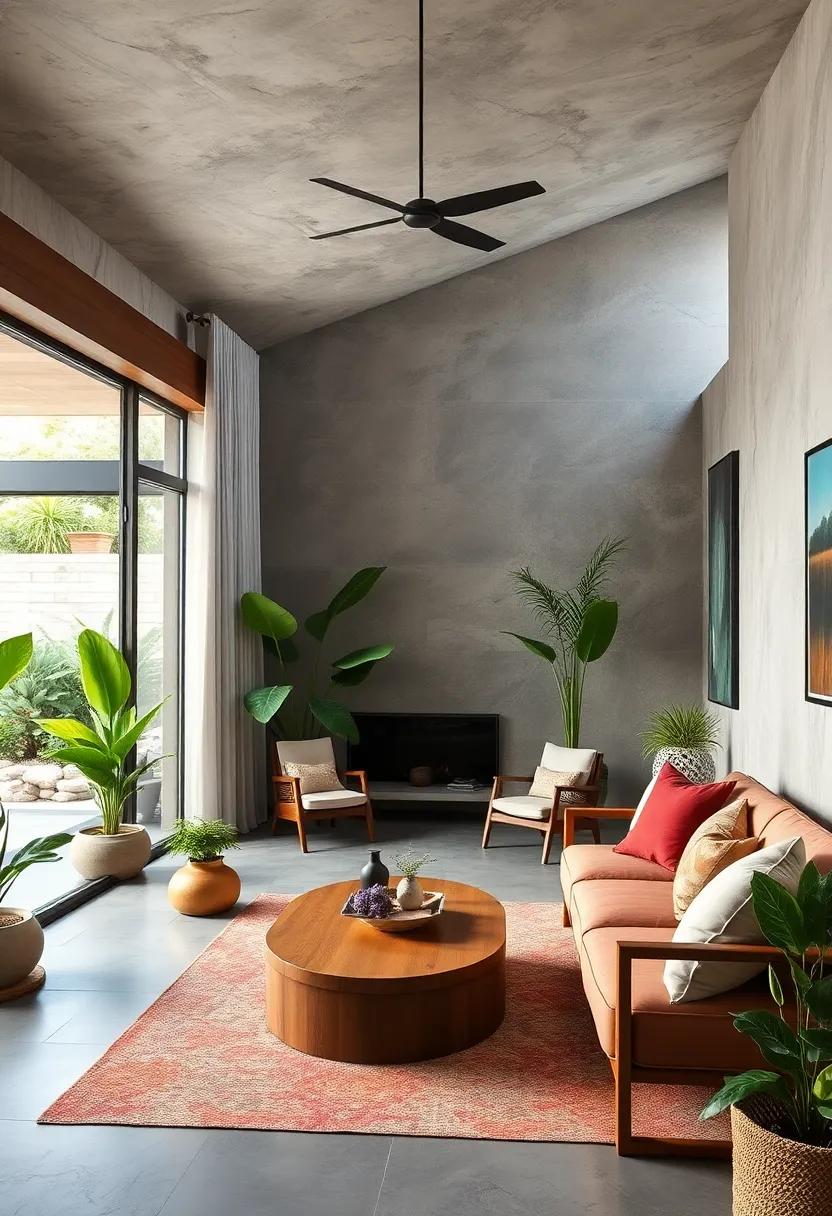
Native gardens offer a vibrant tapestry that reflects the deep cultural roots of the communities they inhabit. By planting species that are indigenous to the area, we not only preserve biodiversity but also pay homage to the traditions and histories of local peoples.These gardens serve as living museums, showcasing plants that have been utilized for centuries in ceremonies, medicines, and sustenance. They foster a connection between the past and present, where every bloom tells a story, and every leaf contributes to the living memory of a place.
Creating these outdoor spaces not only supports ecological balance but also provides a sense of identity and place. Here are some key benefits of integrating native plants into our landscapes:
- Adaptability: Native plants thrive in local soil, climate, and weather conditions.
- Low Maintenance: Reduced need for fertilizers, pesticides, and excessive irrigation.
- Wildlife Support: Provides essential habitat for local pollinators and wildlife.
- Cultural Importance: Enhances understanding of local heritage and ecological history.
| Native Plant | Traditional Use |
|---|---|
| echinacea | Medicinal properties for immune support |
| Yucca | Fiber for weaving and food source |
| Mullein | Used in historical herbal remedies |
Seasonal Changes: Capturing the Year-round Beauty of Native landscapes

Nature’s palette transforms before our eyes as each season unfolds, showcasing the intricate dance of life through the lens of native landscapes. From the first blooms of early spring to the vibrant hues of autumn, these landscapes embrace an extraordinary display of color and texture. The following aspects highlight the year-round allure of native plants:
- Spring Awakening: Discover the delightful emergence of wildflowers, such as bluebells and trilliums, signaling the rebirth of life after winter.
- Summer Vibrance: Witness the flourishing of lush grasses and pollinator-friendly flowers, attracting bees and butterflies that dance among the petals.
- Autumn Splendor: Experience a breathtaking symphony of reds, oranges, and yellows, as deciduous trees don their vivid attire before shedding leaves.
- Winter Serenity: Embrace the stark beauty of evergreens standing tall against the cold, providing shelter and sustenance for wildlife.
As we curate outdoor spaces, it is indeed essential to recognize not only the aesthetic appeal but also the ecological benefits provided by native species throughout the year. By incorporating a variety of plants that bloom, bear fruit, and provide shelter in different seasons, we can create a sustainable environment that thrives with diverse wildlife. Below is a simple overview of select native plants and their seasonal characteristics:
| Plant Name | Season of Interest | Wildlife Benefit |
|---|---|---|
| Purple Coneflower | Summer | Attracts pollinators |
| Maple Tree | Fall | Provides habitat for birds |
| Pawpaw | Spring | Fruits for mammals |
| Eastern Red Cedar | Winter | Shelter for wildlife |
Native Plants and Soil Health: Enhancing Garden Vitality Naturally
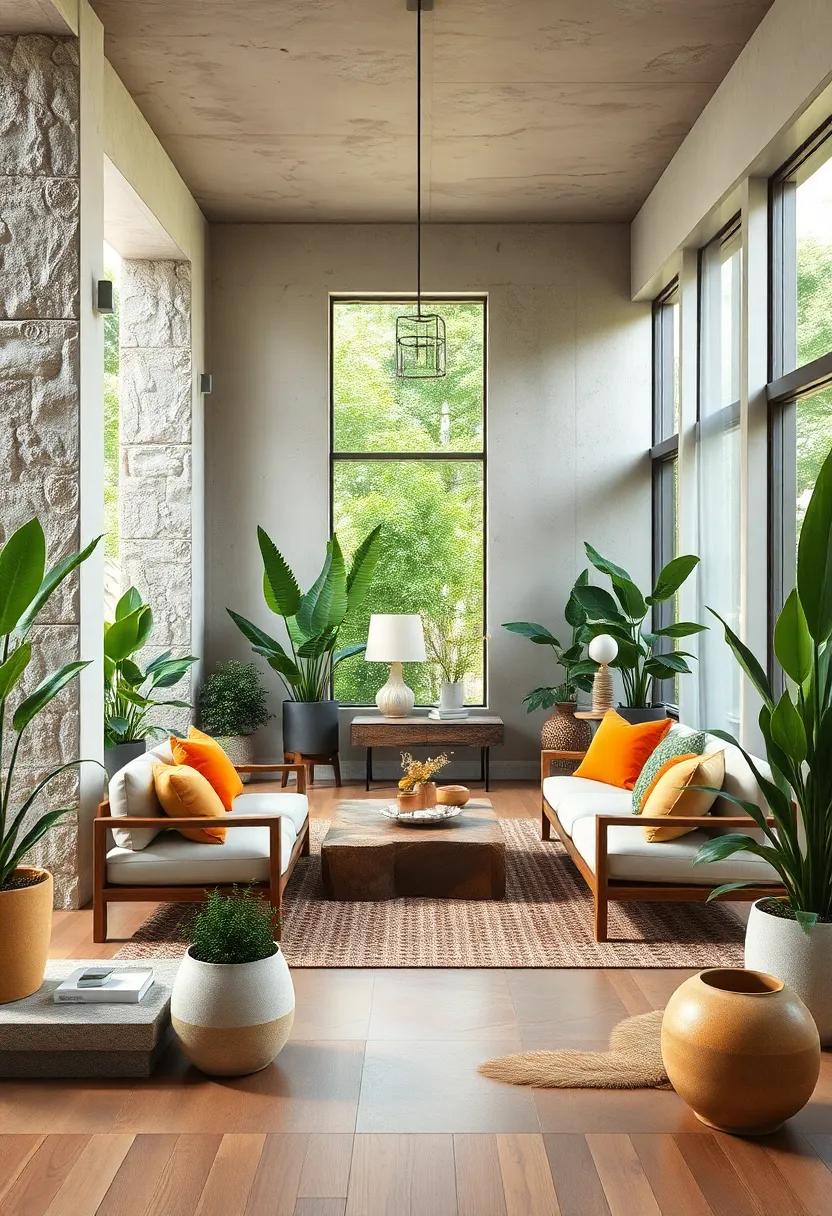
When incorporating native plants into your garden, you not only enhance its aesthetic appeal but also improve overall soil health. Native plants are naturally adapted to local environmental conditions, which means they require less water and fewer chemical treatments, promoting a balanced ecosystem.Their deep-root systems help to:
- Prevent erosion by stabilizing soil with extensive root networks.
- Improve soil structure through organic matter contributions as leaves and roots decompose.
- Enhance nutrient cycling by supporting beneficial microorganisms that thrive around native roots.
Moreover, planting native greenery can lead to enhanced biodiversity, creating a thriving habitat for local fauna. Many native plants produce flowers that are crucial for pollinators such as bees and butterflies, thus facilitating their vital role in the ecosystem. Below is a table showcasing some common native plants and their beneficial contributions to soil health:
| Plant Name | Soil Benefit |
|---|---|
| Purple Coneflower | Attracts pollinators and improves soil nitrogen levels. |
| Black-eyed Susan | Helps break compacted soils, improving aeration. |
| Switchgrass | Enhances soil stability and prevents erosion. |
Unveiling Color Palettes: Designing Landscapes with Native Hues

Every landscape tells a story,and by choosing native plants,we can create a narrative rich in history and ecological significance. When selecting colors for your garden, consider the vibrant hues inherent in native flora. These natural palettes not only enhance the aesthetic appeal of your outdoor space but also provide a harmonious backdrop that supports local wildlife. For example, the soft greens of a native fern can beautifully contrast with the fiery reds and oranges of wildflowers, creating a dynamic visual experience that changes with the seasons. By embracing these colors, we can craft gardens that are not only pleasant to the eye but also nurturing to their surroundings.
Incorporating native hues into your landscape design encourages a greater connection to nature. Different plants bloom at various times of the year, allowing for a year-round spectacle of colors, from bright spring blossoms to the deep, warm tones of autumn foliage. When selecting plants, consider the following aspects to create a palette that supports local ecosystems:
- Seasonality: Choose plants that bloom in different seasons.
- Texture: Mix various foliage types for visual interest.
- Wildlife Support: Incorporate species that attract local pollinators.
| Plant Type | Color palette | Bloom Time |
|---|---|---|
| Purple Coneflower | Vibrant Purples | Summer |
| Goldenrod | Sunny Yellows | Fall |
| Blue Wildflower | Cool Blues | Spring |
Wildlife Corridors: Connecting Habitats through Thoughtful Planting

Wildlife corridors are essential in fostering biodiversity, providing safe passage for various species as they navigate fragmented landscapes. By implementing thoughtful planting strategies, we can create these vital connections between habitats. Such as, consider the following approaches to enhance wildlife corridors:
- Native Plant Species: Selecting flora that is indigenous to the area promotes local fauna and ensures that the ecosystem thrives.
- Diverse Planting: Mixing varieties of trees, shrubs, and grasses can support a wider range of wildlife, including pollinators and migratory birds.
- Natural Structures: Incorporating fallen logs and brush piles can provide shelter and nesting sites for smaller animals.
Moreover, the strategic arrangement of plants can significantly impact the function and effectiveness of these corridors. Understanding the landscape and using a layering technique enables plants to create microhabitats. A sample layout might include:
| Layer | Plant Examples | Wildlife Benefits |
|---|---|---|
| Overstory | Oaks, Maples | Provides shade and nesting sites |
| Midstory | Redbud, Dogwood | Attracts birds and insects |
| Ground Cover | Wildflowers, Grasses | Encourages pollination and soil health |
Educating the Community: The Importance of Native Plant awareness

Raising awareness about native plants is crucial for fostering a sustainable environment within our communities.By educating residents on the benefits of these species, we can inspire a collective movement towards embracing eco-friendly choices in landscape design. Native plants not only enhance the aesthetic appeal of our outdoor spaces but also contribute to biodiversity, creating habitats for local wildlife. Consider the following benefits of incorporating native plants into community gardens and personal landscapes:
- Low Maintenance: Native plants are adapted to local conditions, requiring less water and fewer resources.
- Pollinator-Friendly: They attract essential pollinators,such as bees and butterflies,which are vital for our ecosystems.
- Soil Health: Their deep roots help improve soil structure and reduce erosion.
To effectively educate the community,initiatives such as workshops,native plant sales,and informational campaigns can serve as valuable tools. Local organizations can collaborate with schools and community centers to create informative displays and interactive sessions that engage residents of all ages. A simple table highlighting the most popular native plants in the area could also aid in awareness:
| Plant Name | Benefits |
|---|---|
| black Eyed Susan | Attracts pollinators, drought-tolerant. |
| Butterfly Weed | Supports monarch butterflies, vibrant flowers. |
| Coneflower | Medicinal properties, resilient in varying climates. |
The Art of Layering: Creating Depth in Your Native Plant Landscape
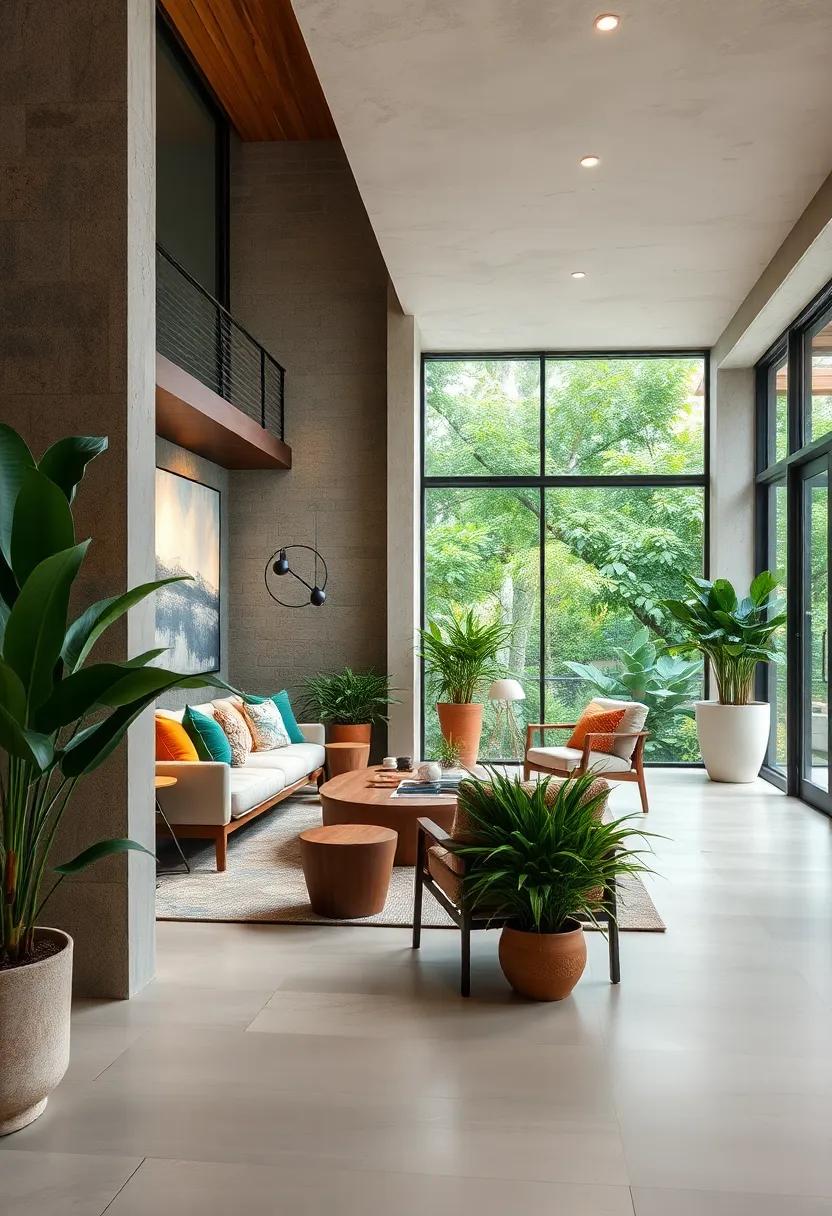
layering is a visual and ecological strategy that transforms your native plant landscape into a multi-dimensional masterpiece. By introducing various heights, textures, and colors, you can create a tapestry that draws the eye and supports local wildlife. Consider incorporating:
- Tall Plants: use native grasses or flowering perennials to create a backdrop that provides structure.
- Midsize Shrubs: Mix in ornamental and edible natives like blueberry or viburnum to introduce width and variety.
- Ground Covers: Fill the gaps with ground-hugging plants such as creeping thyme or native sedges to control erosion and enhance biodiversity.
Utilizing layers not only enhances visual appeal but also mimics nature’s own design, fostering an environment abundant with life. By selecting plants that bloom at different times and have varying foliage colors,you can ensure year-round interest. To assist in planning, consider this simple table:
| Plant Type | Height | Bloom Season |
|---|---|---|
| Tall native Sunflowers | 5-8 feet | Summer |
| Midsize Goldenrod | 2-4 feet | Late Summer to Fall |
| Low Wild Thyme | 6-12 inches | Spring to Early Summer |
Sustainable Practices: Integrating Composting and Rain Gardens

Incorporating composting into your outdoor space not only enriches the soil but also reduces waste. By transforming kitchen scraps and yard waste into nutrient-dense compost,you create a natural fertilizer that supports the vibrant growth of native plants. Consider these benefits of composting:
- Enhanced Soil structure: compost improves soil aeration and retention of moisture.
- Reduced Environmental Impact: Diverting organic waste from landfills minimizes greenhouse gas emissions.
- Cost-Effective: Make your own organic fertilizer instead of purchasing chemical options.
Integrating rain gardens into your outdoor design is another vital step towards sustainability. These gardens utilize native plants that thrive in wet conditions,capturing stormwater runoff and filtering pollutants naturally.Here are a few reasons to consider rain gardens:
- Wildlife Habitat: Encourage pollinators and beneficial insects by planting diverse native species.
- Flood Management: Rain gardens help mitigate flooding by absorbing excess rainwater.
- Aesthetic Appeal: Enhance your outdoor space with beautiful, thriving ecosystems.
community Engagement: Building Connection through Native Gardens
Native gardens serve as a vibrant canvas for fostering community connections. By inviting individuals to participate in the creation and maintenance of these spaces, we cultivate not only beautiful environments but also a sense of belonging. Communities can come together through workshops, planting days, and educational programs, where residents learn about the ecological benefits of native plants while sharing their insights and experiences. These collaborative efforts help to create a tapestry of diverse perspectives,intertwined with a love for local flora,enhancing both personal and environmental stewardship.
The inclusion of native gardens can transform neighborhoods into thriving ecosystems that attract a range of wildlife, promoting biodiversity and encouraging residents to connect with nature. By establishing local native plant gardens, communities can host events aimed at raising awareness about the importance of sustainable practices.Opportunities for regular interactions can take the form of:
- Garden Club Meetings to share gardening tips and experiences.
- Guided Nature Walks that explore the local ecosystem.
- Volunteer Days for maintenance and upkeep.
These activities not only boost community spirit but also empower individuals to appreciate the role of native plants in their surroundings, promoting a culture of sustainability.
Preserving Pollinators: The Critical Role of Native Plants in Conservation
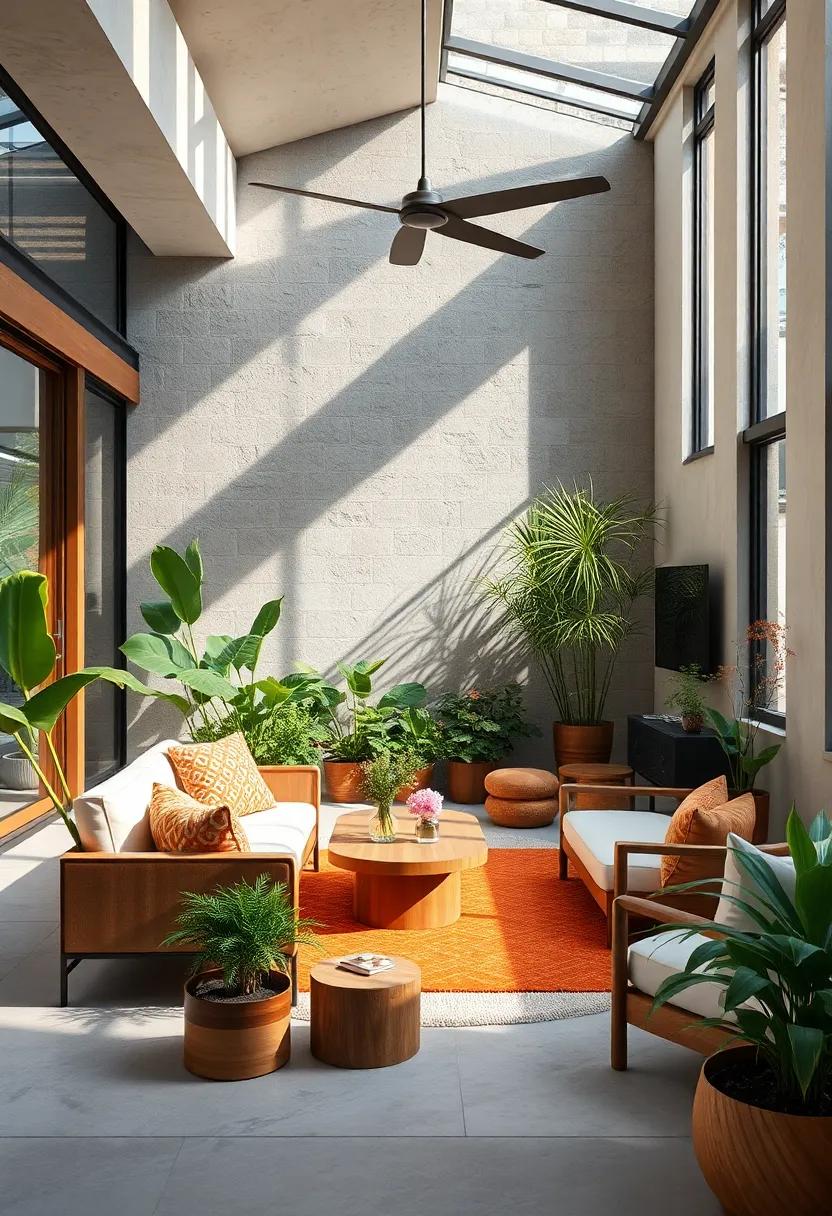
Native plants serve as the backbone of environmental sustainability, playing a vital role in supporting local pollinator populations. These plants have evolved alongside native pollinators, such as bees, butterflies, and hummingbirds, forming essential relationships that enhance biodiversity. By choosing to incorporate native species into outdoor spaces, gardeners and landscape designers can create thriving ecosystems that foster not only vibrant plant life but also provide essential habitats for these crucial pollinators. Among the many benefits of native plants are their adaptability to local climates, reduced maintenance needs, and resistance to pests, which collectively contribute to a healthier environment.
by promoting the use of native flora, we can address the alarming decline in pollinator numbers and ensure the continuity of our food systems and natural landscapes. Key native plants to consider include:
- Echinacea purpurea (Purple Coneflower)
- Asclepias tuberosa (Butterfly Weed)
- Rudbeckia hirta (Black-eyed susan)
- Lobelia cardinalis (Cardinal Flower)
Incorporating these species not only provides sustenance for pollinators but also enhances the visual appeal of gardens and landscapes. A well-planned native garden can mimic nature’s balance, offering a blend of color and texture that changes with the seasons while supporting resilient habitats.With each bloom, we contribute to a larger narrative of conservation that recognizes the interconnectedness of all living beings.
Celebrating Local Ecology: Connecting People to Nature through Native Landscapes
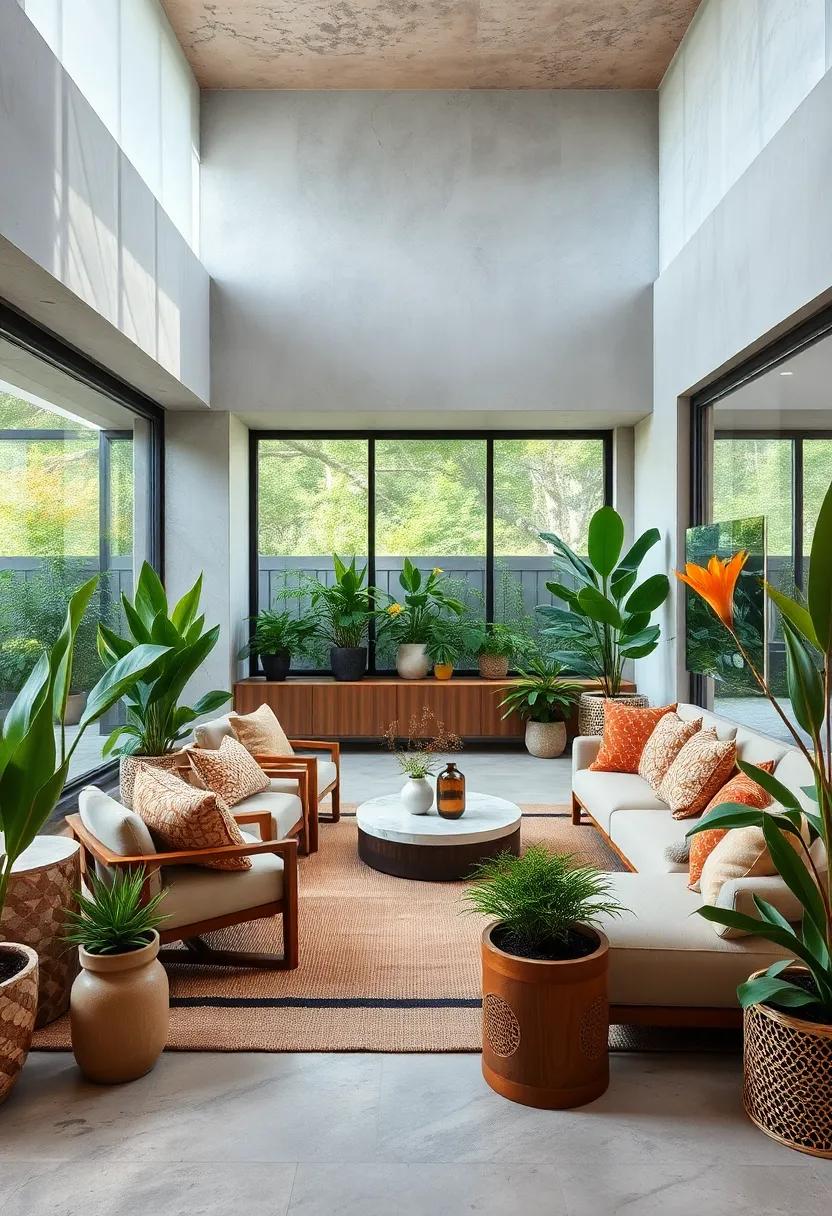
In today’s fast-paced world, reestablishing a connection with our environment is crucial for fostering a sense of community and well-being. By embracing native plants in our landscaping efforts, we can transform outdoor spaces into thriving ecosystems. Native plants are not only beautiful, but they also support local wildlife, conserve water, and reduce maintenance needs.Some key benefits of incorporating native landscapes include:
- Enhanced Biodiversity: Attracts local fauna such as birds, butterflies, and beneficial insects.
- Low Water Requirements: Native species typically require less irrigation, making them environmentally friendly.
- Soil Health: Native plants contribute to improved soil quality by preventing erosion and fostering resilience.
- Cultural Significance: Many native plants have historical or cultural ties, deepening the connection between people and their environment.
Exploring the aesthetic potential of native gardens not only beautifies our communities but also educates the public about local ecology. For instance, a well-planned native garden can inspire a sense of pride and stewardship among residents. The table below highlights some popular native plants along with their key attributes:
| Plant name | Height | Wildlife Attracted |
|---|---|---|
| Echinacea purpurea | 2-4 ft | Butterflies,Bees |
| Asclepias tuberosa | 1-3 ft | Monarchs,Hummingbirds |
| Rudbeckia hirta | 1-2 ft | Bees,Birds |
| Amsonia tabernaemontana | 2-3 ft | Butterflies |
Eco-Friendly Outdoor Gatherings: Designing Spaces for Connection
Creating outdoor gatherings that nurture both our connections and the environment starts with thoughtful design. Emphasizing native plants not only enhances the ecological balance but also fosters a sense of place and belonging. By incorporating species that are adapted to the local climate, you can reduce water usage and eliminate the need for chemical fertilizers and pesticides.Consider these guiding principles for incorporating native flora into your gathering spaces:
- Design for Biodiversity: Create habitats that support local wildlife by planting a variety of native species.
- Incorporate Sustainable Materials: Utilize reclaimed wood and natural fibers for seating, tables, and decorative elements.
- Establish Natural Pathways: Use mulch or gravel made from local materials to limit soil erosion and improve the flow of foot traffic.
As you plan your space, integrating elements such as seating areas, fire pits, and dining tables can redefine the atmosphere of your gatherings. Consider designing a multi-functional area that encourages diverse activities, from intimate conversations to community meals. An effective layout can include:
| Feature | Benefit |
|---|---|
| Seating Circles | Encourages conversation and connection. |
| Shade Structures | Provides comfort during warmer months while supporting plant growth. |
| Interactive Gardens | Invites engagement and learning about native flora. |
The Future of Landscaping: Advocating for Native Plant Approaches
As we look towards a greener future, adopting native plants in landscaping designs is crucial for promoting biodiversity and ecological balance. Native plants, which are naturally adapted to the local environment, offer numerous benefits, including reduced water usage and minimal reliance on chemical fertilizers and pesticides. By focusing on these indigenous species, we create sustainable outdoor spaces that require less maintenance and provide essential habitats for local wildlife. Some advantages to consider include:
- Enhanced Biodiversity: Native plants support local ecosystems and attract pollinators.
- Water Conservation: Many native species are drought-resistant, helping to reduce overall water consumption.
- Low Maintenance: These plants thrive in their natural conditions, leading to fewer resources spent on upkeep.
Incorporating native plant approaches into landscaping also means rethinking design principles to create beautiful and functional outdoor spaces. By selecting plants that flourish in our specific climates and soils, we can achieve stunning aesthetics while simultaneously making a positive environmental impact. Consider the following aspects when planning your landscape:
| Native Plants | benefits |
|---|---|
| Milkweed | Attracts butterflies, especially monarchs. |
| Echinacea (Coneflower) | Beautiful blooms and drought-tolerant. |
| red-twig Dogwood | provides year-round beauty and erosion control. |
Concluding Remarks
In a world increasingly aware of the delicate balance between nature and development, the journey toward creating sustainable outdoor spaces invites us to embrace the inherent beauty and resilience of native plants. These local flora not only enhance the aesthetic appeal of our gardens and public parks but also play a crucial role in supporting local ecosystems and wildlife. As we move forward, let us remember that engaging with our environment through sustainable practices not only enriches our landscapes but also fosters a deeper connection to the natural world around us. By choosing to cultivate spaces that honor the rhythms of local ecosystems, we pave the way for a greener, more vibrant future—one where the native plants thrive, and we find joy and solace in the gardens we create.Whether you’re a seasoned gardener or a curious beginner, the possibilities are endless. Embrace the challenge, celebrate the beauty, and let nature guide your way.
 Decorationg Interior Design
Decorationg Interior Design
